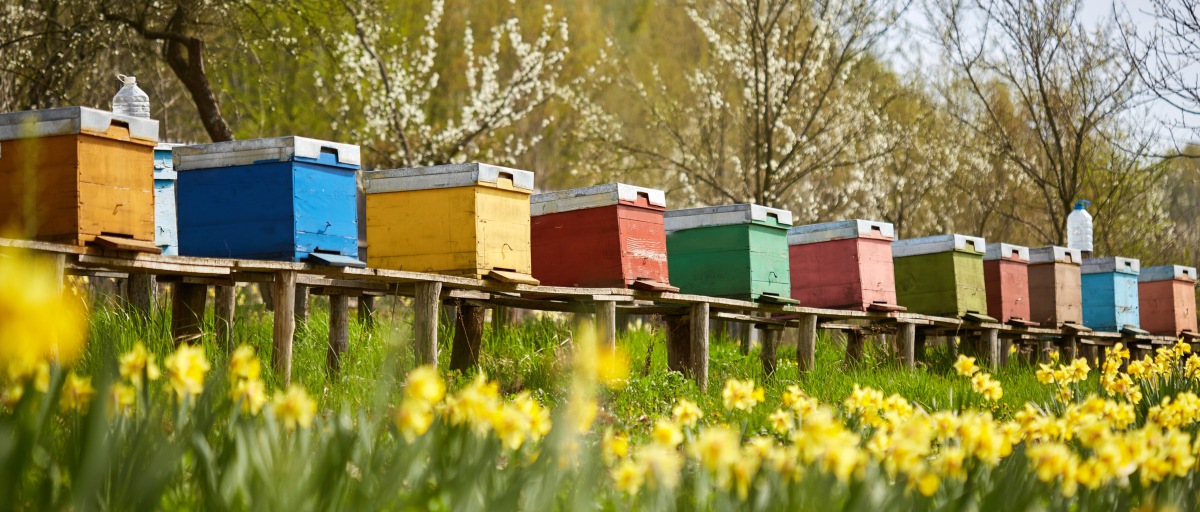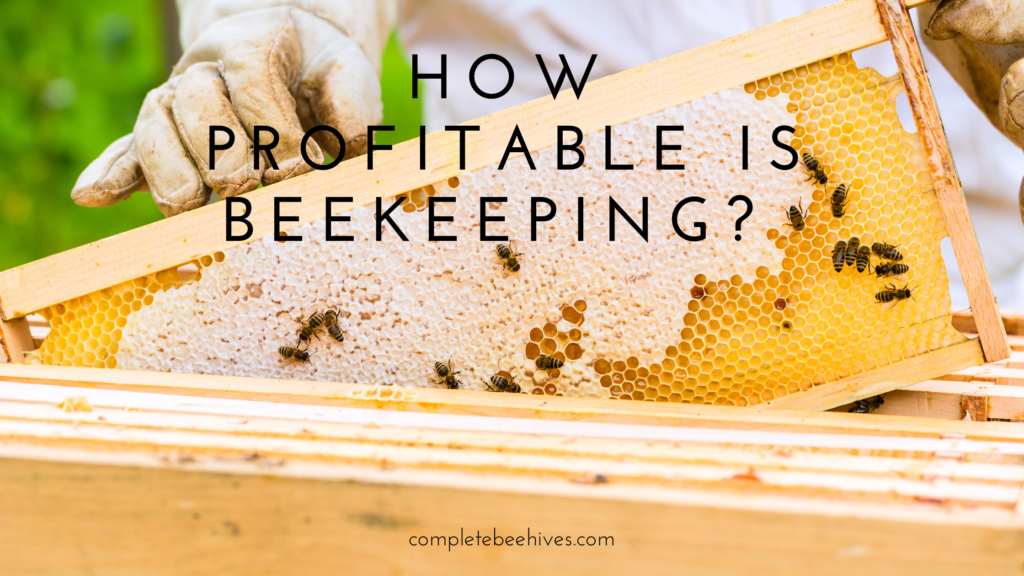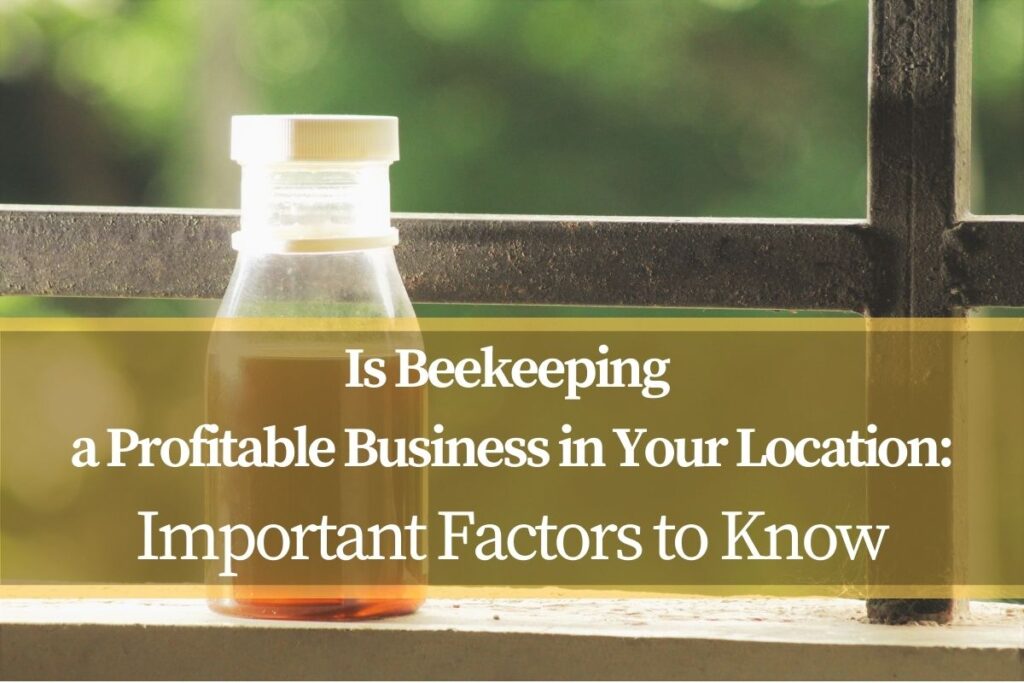
Thinking about getting into beekeeping? Wondering if it’s a profitable venture? The answer may surprise you. Despite its humble beginnings and the perception of being a hobby for nature enthusiasts, beekeeping can actually be a lucrative business. With the increasing demand for honey and other bee products, along with the essential role bees play in pollination, beekeeping has the potential to generate a steady income and provide a rewarding agricultural experience. So, if you’re curious about the profitability of beekeeping, read on to discover the buzzing potential it holds.

Factors affecting profitability
Initial investment
When considering beekeeping as a potential source of income, it is important to factor in the initial investment required. This includes the cost of purchasing beehives, protective gear, bee packages or nucs, and other necessary equipment and supplies. The initial investment can vary depending on the scale of the operation, but it is an essential factor that will influence the overall profitability of beekeeping.
Equipment and supplies
Beekeeping requires specific equipment and supplies to ensure the well-being of the bees and the successful management of the hives. These include beehives, frames, smokers, hive tools, protective clothing, feeders, and many other essentials. The cost of these items can add up, so it is important to consider the ongoing maintenance and replacement needs when calculating profitability.
Hive management
Effective hive management is crucial for beekeeping success and profitability. This includes regular inspections to monitor the health of the colonies, prevention and treatment of pests and diseases, proper feeding and nutrition, and swarm prevention measures. Good hive management practices ensure strong and productive colonies, which in turn contribute to the profitability of the beekeeping operation.
Location and bee forage
The location of the beehives and the availability of suitable bee forage play a significant role in beekeeping profitability. bees require access to a diverse range of flowers and plants to gather nectar and pollen for their survival and honey production. The presence of abundant and diverse bee forage in the surrounding area can greatly enhance honey production and ultimately contribute to increased profitability.
Bee health and productivity
The health and productivity of the bees themselves are key factors in determining the profitability of beekeeping. healthy bees are more likely to produce higher quantities of honey and other valuable bee products. Factors that influence bee health and productivity include genetics, nutrition, pests and diseases, and the overall management practices employed by the beekeeper. It is crucial to prioritize the well-being of the bees through proper care and attention to maximize profitability.
Costs of beekeeping
Beekeeping equipment
Beekeeping equipment, including beehives, frames, and protective gear, can represent a significant investment for beekeepers. The cost of these items can vary depending on the quality and quantity needed. It is important to budget for the initial purchase of equipment as well as ongoing maintenance and replacement costs.
Hive maintenance
Regular maintenance of beehives is necessary to ensure the longevity and productivity of the colonies. This includes replacing old frames, repairing hive boxes, and providing proper ventilation. Beekeepers should also consider the cost of maintaining a clean and hygienic environment to prevent the spread of pests and diseases. All these maintenance tasks contribute to the overall costs of beekeeping.
Bee packages or nucs
To start a beekeeping operation, beekeepers typically need to purchase bee packages or nucleus colonies (nucs). These include a queen bee and a specific number of worker bees. The cost of bee packages or nucs can vary depending on the local market and the time of the year. It is important to factor in these costs when evaluating the profitability of the beekeeping venture.
Feeding and supplemental supplies
During periods of low nectar flow, beekeepers may need to supplement the bees’ diet with sugar syrup or other supplemental food sources. Additionally, certain supplements, such as pollen or protein patties, may be required to support the health and productivity of the colonies. The costs of feeding and supplemental supplies should be considered when calculating beekeeping expenses.
Pest and disease management
Pests and diseases can pose significant challenges to beekeepers and impact the profitability of the operation. Regular monitoring and treatment for pests such as Varroa mites and diseases like American foulbrood are necessary to maintain healthy colonies. The cost of pest and disease management, including treatments and preventive measures, should be factored into the overall expenses of beekeeping.
Marketing and selling honey
Another cost to consider is marketing and selling the honey produced by the beekeeping operation. This can include packaging materials, labeling, advertising, and potentially attending farmer’s markets or other sales venues. Developing a strong marketing strategy and investing in effective promotion can help maximize the returns from honey sales.
Income sources for beekeepers
Honey production and sales
One of the primary sources of income for beekeepers is the production and sale of honey. The amount of honey produced will depend on factors such as hive strength, forage availability, and region-specific honey flows. Beekeepers can sell their honey directly to consumers, through local markets, or even establish partnerships with retail stores or online platforms. The quality of the honey and the ability to differentiate it from competitors can also impact the pricing and profitability of honey sales.
Pollination services
Beekeepers can also generate income by offering their bees for pollination services to farmers and orchard owners. Many crops require the assistance of bees for successful pollination, and beekeepers can earn fees by placing their hives near these fields during the blooming season. The demand for pollination services can vary depending on the region and the specific crops being grown.
Wax and propolis
In addition to honey, beekeepers can derive income from selling beeswax and propolis. Beeswax can be used for various purposes, such as candle making, cosmetics, and crafts. Propolis, a resinous substance collected by bees, has various medicinal and health properties and is sought after by the natural health products industry. Properly harvesting and processing beeswax and propolis can provide additional revenue streams for beekeepers.
Queen bees and bee packages
Beekeepers have the opportunity to generate income through the sale of queen bees and bee packages. Queen bees are in high demand, especially for beekeepers wanting to requeen their colonies or start new ones. Bee packages, which include a queen and a certain number of worker bees, are also sought after by those starting out in beekeeping. By selectively breeding and raising queen bees, beekeepers can establish a profitable business selling these valuable bee products.
Bee products and value-added products
Beekeepers can explore the production and sale of various bee products to enhance profitability. These include items such as pollen, royal jelly, and bee bread, which have potential health benefits and are in demand within certain consumer markets. Additionally, beekeepers can create value-added products such as honey-based skincare products, candles, or even mead (honey wine) to diversify their income sources and cater to different customer preferences.
Profit potential in beekeeping
Calculating expenses and income
To assess the profitability of beekeeping, it is crucial to carefully calculate both the expenses and potential income sources. Taking into account the costs of equipment, maintenance, bee packages, feeding supplies, pest management, and marketing, beekeepers can estimate their financial outlays. Simultaneously, factoring in the revenue from honey sales, pollination services, bee products, and other potential income streams will provide a clearer picture of the profit potential.
Understanding market demand
Understanding market demand for honey and related bee products is essential for maximizing profitability. Researching local and regional markets, identifying potential customers, and considering consumer preferences and trends can help beekeepers position themselves effectively. By targeting niche markets or offering unique products, beekeepers can capitalize on demand and potentially achieve higher prices for their products.
Scaling up the operation
Expanding the beekeeping operation can contribute to increased profitability if managed properly. By gradually increasing the number of hives and colonies, beekeepers can access economies of scale and benefit from a larger honey production volume. However, scaling up should be undertaken cautiously, considering factors such as available resources, hive management capabilities, and market demand to avoid overextending the operation.
Diversifying revenue streams
To enhance profitability and create a more stable income flow, beekeepers can diversify their revenue streams. By exploring different bee products, such as beeswax or propolis, as well as value-added products, beekeepers can tap into various markets and consumer preferences. Diversification can help mitigate risks associated with fluctuations in honey prices or changing market dynamics, providing a more sustainable and profitable beekeeping business.

Risks and challenges
Colony losses
One of the significant risks faced by beekeepers is the loss of colonies. Factors such as pests (e.g., Varroa mites), diseases (e.g., American foulbrood), environmental conditions, or insufficient hive management practices can contribute to colony losses. These losses not only impact the ability to produce honey but also require investment in reestablishing or purchasing new colonies, adding to the overall expenses of beekeeping.
Pests and diseases
Pests and diseases are persistent challenges in beekeeping that can impact both the health of the bees and the profitability of the operation. Varroa mites, small hive beetles, wax moths, and various viral and bacterial infections can weaken colonies, reduce honey production, and even lead to colony collapse. Effective pest and disease management strategies, including monitoring, treatment, and preventive measures, are necessary to minimize the negative impact of these challenges.
Weather conditions
Weather conditions, including extreme temperatures, droughts, or excessive rainfall, can directly affect the availability of bee forage and the productivity of the bees. Unfavorable weather conditions can result in reduced honey flows, impacting the income potential of the beekeeping operation. Adaptation strategies, such as locating beehives in areas with more stable weather patterns or providing supplementary feeding during lean periods, can help mitigate the risks associated with weather fluctuations.
Honey market fluctuations
The honey market is subject to fluctuations in both supply and demand, which can impact the profitability of the beekeeping business. Factors such as changes in consumer preferences, competition, or global honey production levels can lead to price volatility. Beekeepers need to stay informed about market trends, establish reliable sales channels, and potentially diversify their honey sales to minimize the risks associated with market fluctuations.
Competition
Beekeeping has gained popularity in recent years, resulting in increased competition within the industry. Depending on the region, the market may become saturated with honey producers, making it more challenging to differentiate products and secure profitable sales. Developing a unique selling proposition, identifying niche markets, and establishing strong relationships with customers can help beekeepers stand out in a competitive landscape.
Regulations and permits
Beekeepers are subject to various regulations and permits related to beekeeping practices, honey processing, and product sales. Compliance with these regulations may require investments in infrastructure, documentation, and additional costs. Failure to comply with regulations can result in penalties or restrictions on the sale of honey and other bee products. Understanding and adhering to the applicable regulations is essential for maintaining a profitable and legally compliant beekeeping venture.
Success stories in beekeeping
Case study 1: Beekeeper profitability
John Smith, a beekeeper in rural Iowa, has managed to achieve consistent profitability in his beekeeping operation. By carefully calculating his expenses and maintaining meticulous hive management practices, John has been able to optimize his honey production. Additionally, he diversified his revenue streams by selling beeswax and propolis to local artisans, which has significantly increased his overall income. John’s success serves as an inspiring example of the potential for profitability in beekeeping.
Case study 2: Innovative beekeeping techniques
Sarah Johnson, a beekeeper in California, embraced innovative techniques in her beekeeping operation. She invested in small-scale urban beekeeping and focused on producing high-quality honey for the local market. By leveraging sustainable practices, such as organic beekeeping and rooftop apiaries, Sarah has established a loyal customer base and commanding premium prices for her honey. Her innovative approach demonstrates that creativity and adaptability can lead to profitability in beekeeping.
Case study 3: Sustainable beekeeping models
In the Netherlands, a group of beekeepers came together to establish a cooperative that focuses on sustainable beekeeping practices. They prioritize bee health and biodiversity, employing natural pest and disease management methods. By selling honey through their cooperative, these beekeepers have created a sustainable business model that provides fair prices for their honey and supports environmentally friendly beekeeping practices. Their success exemplifies the potential for profitability through a concerted effort towards sustainability.

Tips for maximizing profitability
Invest in education and training
Continued education and training in beekeeping practices can significantly contribute to maximizing profitability. By staying up to date with the latest research, attending workshops, and seeking mentorship from experienced beekeepers, beekeepers can enhance their skills and knowledge. This allows for improved hive management, pest and disease prevention, and overall efficiency, leading to increased productivity and profitability.
Choose the right beekeeping method
Selecting the most suitable beekeeping method to match the resources, goals, and objectives of the operation is crucial for maximizing profitability. Whether it is traditional hive management, top-bar hives, or more innovative techniques, beekeepers should carefully evaluate their options. Each method has its advantages and challenges related to equipment costs, maintenance requirements, sustainability, and honey production potential, so choosing wisely is essential.
Optimize hive management practices
Effective hive management practices are key drivers of profitability in beekeeping. Regular inspections, proactive pest and disease management, proper feeding and nutrition, and swarm prevention measures can contribute to strong and productive colonies. Implementing efficient hive management practices helps minimize losses, increase honey production, and maximize the overall profitability of the operation.
Develop a strong marketing strategy
A well-designed marketing strategy is vital for beekeepers to effectively promote their honey and bee products and reach their target audience. This may include branding, packaging, online and offline marketing efforts, and engaging with local communities. Creating a compelling story around the honey and highlighting its unique qualities can set beekeepers apart from competitors and create a loyal customer base, ultimately enhancing profitability.
Explore value-added products
In addition to selling plain honey, beekeepers can explore value-added products to diversify their income streams. By incorporating beeswax into candles, creating artisanal honey products, or even producing mead, beekeepers can cater to different market segments and potentially achieve higher profit margins. Investing in product development, branding, and marketing for value-added products can open up new opportunities for increased profitability.
Network with other beekeepers
Building a strong network within the beekeeping community can provide valuable insights, knowledge sharing, and potential collaboration opportunities. Participating in beekeeping associations, attending conferences and industry events, and engaging with online communities can help beekeepers stay informed about industry trends, exchange best practices, and explore new ideas. The collective knowledge and support of fellow beekeepers can contribute to maximizing profitability.
Conclusion
Beekeeping can be a profitable venture for those who are diligent, well-prepared, and adaptable to the challenges faced in the industry. Factors such as the initial investment, equipment and supplies, hive management practices, location and bee forage, and bee health and productivity all play significant roles in determining the profitability of beekeeping.
Understanding the costs associated with beekeeping, including equipment, maintenance, feeding supplies, pest management, and marketing, is essential for evaluating profitability. On the income side, beekeepers can generate revenue through honey production and sales, pollination services, beeswax and propolis, queen bees and bee packages, and various other bee products.
To maximize profitability, beekeepers should calculate expenses and income accurately, understand market demand, consider scaling up the operation, and explore diversifying revenue streams. However, the risks and challenges, such as colony losses, pests and diseases, weather conditions, honey market fluctuations, competition, and regulations, should also be carefully managed.
By learning from success stories in beekeeping, implementing tips for maximizing profitability, and investing in education, training, and networking, beekeepers can improve their chances of building a profitable and sustainable beekeeping business. With diligence, passion, and a focus on bee health and productivity, beekeeping can indeed be a profitable endeavor.
